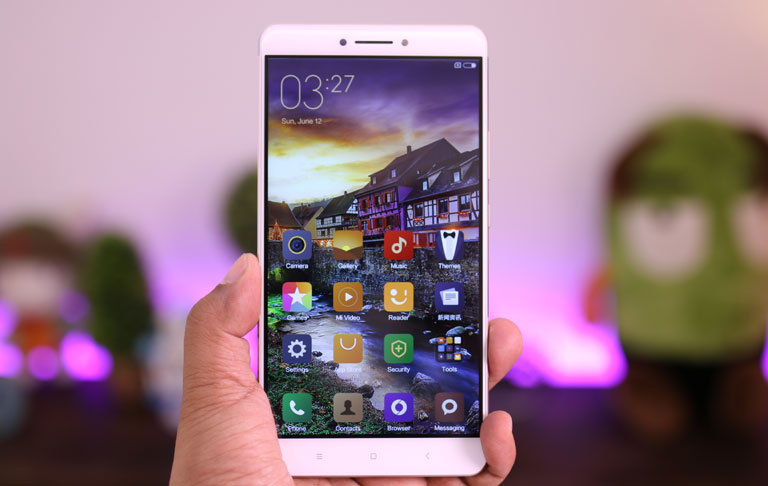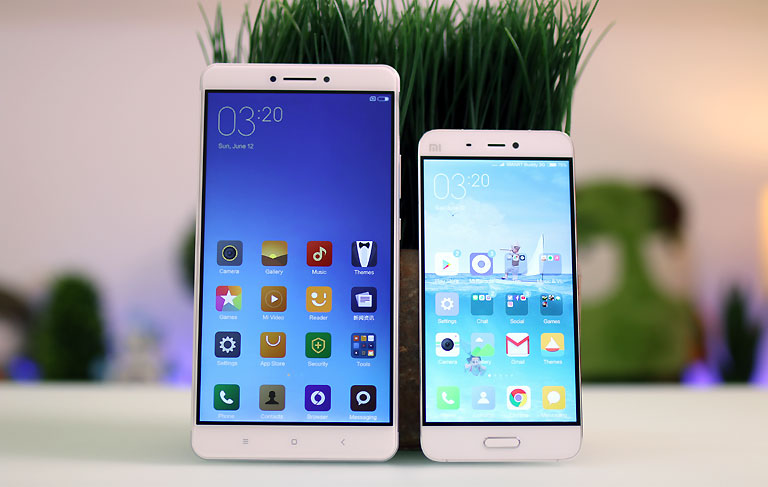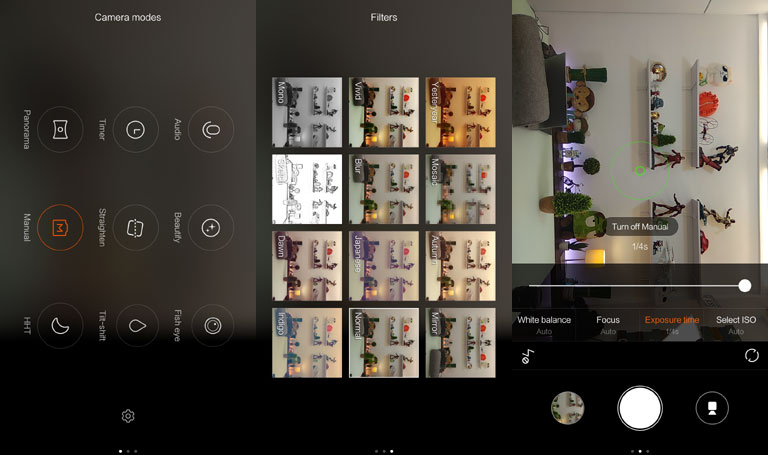
Announced just last month, the Xiaomi Mi Max is the company’s new phablet-type device. It’s basically an over-sized smartphone targeted at the mid-range market with a humongous 6.44-inch display. It’s not alone in this size category and several other brands have had their own versions before, like the Mate 8 and Xperia Z Ultra.
Xiaomi’s Mi Max is a combination of a large-sized display with a very capable hardware at an affordable price point. Folks who loved watching movies, YouTube, gaming and a lot of browsing on social media will definitely like this combo.

Our review unit is the base model with a Snapdragon 650 hexa-core chip and 3GB of RAM. Compared to the Snapdragon 652 which has a quad-core Cortex-A72 processor, the SD650 only has two cores of the same processor.
The Mi Max carries the same design signature as the Mi Note series. It’s got a solid metallic body in a slim, flat and unibody design. The silver model has a white front panel covered with Gorilla Glass 4.

The unit also supports a hybrid dual-SIM cradle that can carry two SIM cards or the other card may be swapped with a microSD card up to 128GB. The 32GB internal storage has a usable 24.3GB space.
The screen is 6.44 inches across with a resolution of 1920×1080 pixels, giving it a 342ppi pixel density. The glass slightly curves around the edges, reminiscent of the iPhone 6S Plus but with chamfered edges. There are three capacitive buttons at the bottom end — Home , Back and Recent Apps.

Despite the extra-large size, the full HD display looked very nice and crisp at 342ppi. The screen is bright and the IPS panel offered neutral color saturation. The brightness is not as good as the one on the Xiaomi Mi 5, though.

The back panel is flat and smooth in matte silver finish that tapers toward the edges. The top and bottom corners are cut in a different shade of silver, perhaps to provide better wireless signal reception.
Smack in the middle is a recessed circular fingerprint scanner. Due to the size of the phablet, it’s quite hard to reach the sensor with the index finger. Despite that, the scanner is fast and accurate with a maximum of 5 unique prints.

The Snapdragon 650 paired with 3GB of RAM performed really well. Games and apps load quickly and perform very well, thanks to the Adreno 510 graphics. Even synthetic benchmarks like Antutu gave it pretty good scores, hitting over 77,000 and beating SD810 performance. That’s just with the dual-core Cortex A72 processor running at 1.8GHz with the quad-core Cortex A53 1.4GHz for low-power consumption. We can only imagine how much it will perform better with the SD652 which has a quad-core Cortex A72 processor.

The 16-megapixel rear camera takes really good photos though the camera apps seems to be pretty plain and simple. There’s a limited Manual Mode that supports up to 1/4s exposure, White Balance and ISO settings from 100 to 3200. 4K video recording is also supported but there’s some very noticeable sharpening of the images.

The rear camera comes with a dual-LED, dual-tone flash when needed. Here are some sample photos we took using the rear camera:
Xiaomi also announced MIUI 8.0 but the unit we had still has MIUI 7.0 pre-installed so we’ll just have to wait for the update. Since it’s also a China model, there is no Google Play Store pre-installed so we had to do some tinkering around to get this to run.
Xiaomi Mi Max specs:
6.44-inch IPS full HD display @ 1920×1080 pixels, 342 ppi
Gorilla Glass 4
Qualcomm Snapdragon 650/652 CPU
4 x 1.4GHz Cortex-A53 + 2 x 1.8GHz Cortex-A72
Adreno 510 GPU
3GB / 4GB RAM
32GB, 64GB, 128GB internal storage
microSD up to 128GB
16MP PDAF rear camera w/ LED flash
5MP front camera (85-degree wide-angle)
Dual-SIM hybrid
4G+, 3G HSPA+
WiFi 802.11ac
Bluetooth 4.2
Rear fingerprint sensor
Infrared port (Mi Remote app)
4,850mAh Li-Ion battery
MIUI 7
173.1 x 88.3 x 7.5mm (dimensions)
203 grams (weight)
Gold, Silver, Gray
One of the more interesting features of the Mi Max is the built-in IR blaster which we often use to control our appliances at home. Also, there’s that huge 4,830mAh battery. It’s the biggest one in a smartphone and phablet we’ve seen yet. Based on our initial tests, the battery life last very long, about 2 days on regular use. The charger that came with it has a 2A charging capacity and can fill up the 4,830mAh battery in about 2 hours and 55 minutes. That’s still fairly fast considering the large battery capacity.

We’ll post actual test results in our full review next week.
The Xiaomi Mi Max is not yet officially released in the Philippines but you can get it from online sellers like Widget City for Php13,990USD 238INR 20,210EUR 227CNY 1,736 (see listing here).

YugaTech.com is the largest and longest-running technology site in the Philippines. Originally established in October 2002, the site was transformed into a full-fledged technology platform in 2005.
How to transfer, withdraw money from PayPal to GCash
Prices of Starlink satellite in the Philippines
Install Google GBox to Huawei smartphones
Pag-IBIG MP2 online application
How to check PhilHealth contributions online
How to find your SIM card serial number
Globe, PLDT, Converge, Sky: Unli fiber internet plans compared
10 biggest games in the Google Play Store
LTO periodic medical exam for 10-year licenses
Netflix codes to unlock hidden TV shows, movies
Apple, Asus, Cherry Mobile, Huawei, LG, Nokia, Oppo, Samsung, Sony, Vivo, Xiaomi, Lenovo, Infinix Mobile, Pocophone, Honor, iPhone, OnePlus, Tecno, Realme, HTC, Gionee, Kata, IQ00, Redmi, Razer, CloudFone, Motorola, Panasonic, TCL, Wiko
Best Android smartphones between PHP 20,000 - 25,000
Smartphones under PHP 10,000 in the Philippines
Smartphones under PHP 12K Philippines
Best smartphones for kids under PHP 7,000
Smartphones under PHP 15,000 in the Philippines
Best Android smartphones between PHP 15,000 - 20,000
Smartphones under PHP 20,000 in the Philippines
Most affordable 5G phones in the Philippines under PHP 20K
5G smartphones in the Philippines under PHP 16K
Smartphone pricelist Philippines 2024
Smartphone pricelist Philippines 2023
Smartphone pricelist Philippines 2022
Smartphone pricelist Philippines 2021
Smartphone pricelist Philippines 2020
atalia says:
Any bloatwares? Would this be a good phone for people who like installing games? This phone or asus ultra?
Ronald says:
looks good!
dan philip Hernandez says:
Does this support USB OTG? Excited for your full review. Thanks!